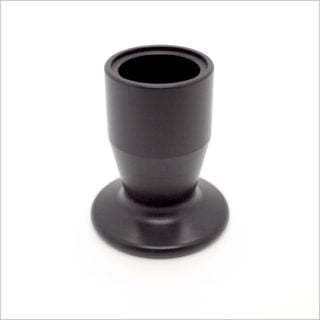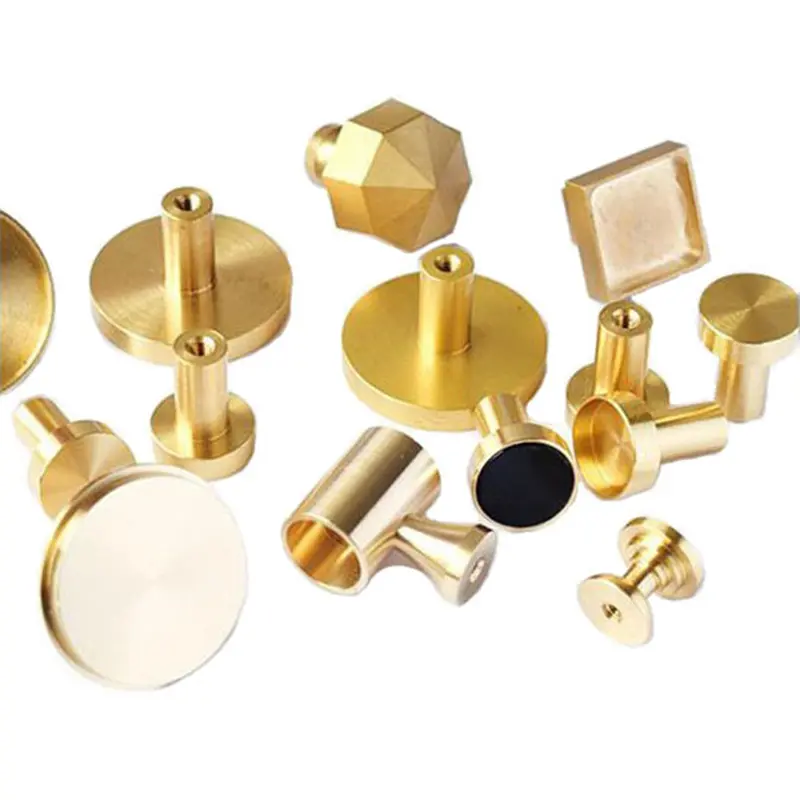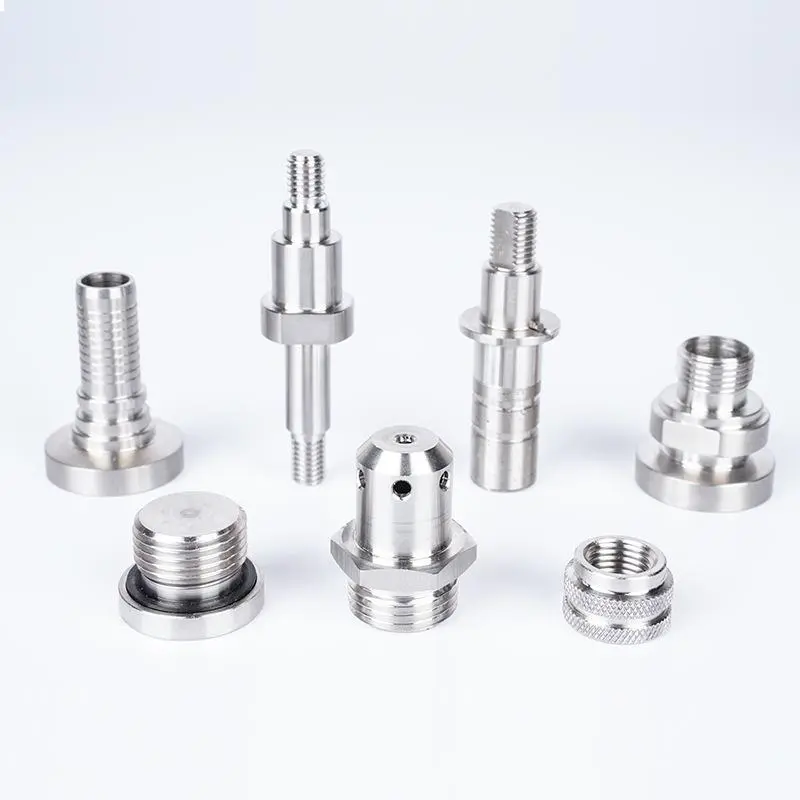Understanding the Precision Behind Aerospace Machined Parts: A Comprehensive Guide
Published Time:
2025-09-02
Understanding the Precision Behind Aerospace Machined Parts
When it comes to aerospace engineering, precision is not just a requirement; it's a necessity. The components that make up aircraft and spacecraft must adhere to the highest standards of quality and accuracy. This comprehensive guide explores the various facets of aerospace machined parts, including their manufacturing processes, materials used, regulatory standards, and innovations that continue to shape the industry.
1. Introduction to Aerospace Machined Parts
Aerospace machined parts are critical components that play a vital role in the safety and efficiency of aircraft and spacecraft. These parts are typically manufactured using high-precision machining techniques to meet the stringent requirements of the aerospace industry. From engine components to structural elements, each machined part must demonstrate exceptional accuracy and durability.
The importance of precision engineering in aerospace machining cannot be overstated. A minor defect in a component can lead to catastrophic failures, making it essential for manufacturers to adhere to the highest standards of quality throughout the production process.
2. Key Manufacturing Processes for Aerospace Parts
A variety of manufacturing processes are employed to create aerospace machined parts, each tailored to achieve specific design requirements. The most common techniques include:
CNC Machining
Computer Numerical Control (CNC) machining is the backbone of modern aerospace manufacturing. CNC machines can perform complex milling, turning, and drilling operations with incredible precision. The ability to automate machining processes allows manufacturers to produce parts quickly while maintaining tight tolerances.
3D Printing
Additive manufacturing, or 3D printing, is gaining momentum in aerospace due to its potential for reducing weight and material waste. By layering materials to create parts, manufacturers can design intricate geometries that are not feasible with traditional machining methods. This technology is especially beneficial for creating prototypes and small batches of specialized components.
Injection Molding
While not as common for metal parts, injection molding is often used for producing plastic components in aerospace applications. This technique offers high production rates and consistent quality, making it ideal for non-structural parts.
Forging and Casting
Forging and casting processes are frequently used to create larger, more complex components. Forging involves shaping metal using compressive forces while casting entails pouring molten metal into a mold. Both processes are essential for producing parts that can withstand extreme stresses and temperatures.
3. Materials Commonly Used in Aerospace Machining
The selection of materials for aerospace machined parts is crucial to ensure durability, strength, and performance. Some of the most widely used materials include:
Aluminum Alloys
Aluminum alloys are favored for their lightweight and high strength-to-weight ratio. They are commonly used in aircraft structures, wings, and fuselage components.
Titanium Alloys
Titanium, known for its resistance to corrosion and high strength, is often utilized in parts exposed to extreme conditions, such as engine components. Its high cost is offset by its performance advantages.
Stainless Steel
Stainless steel is renowned for its durability and resistance to oxidation. It is often used in fasteners, engine components, and other crucial parts requiring high strength and corrosion resistance.
Composite Materials
Composite materials, such as carbon fiber reinforced polymers, are increasingly being used in aerospace due to their lightweight and high strength capabilities. These materials are typically used in structural components where reducing weight is a priority.
4. Quality Control and Assurance in Aerospace Manufacturing
Quality control is a critical aspect of aerospace manufacturing. Ensuring that every machined part meets rigorous standards is vital for maintaining safety and reliability. Key elements of quality assurance include:
Inspection Techniques
Manufacturers employ various inspection methods, such as non-destructive testing (NDT) and dimensional checks, to ensure parts meet specifications. NDT techniques, such as ultrasonic testing and X-ray inspection, allow for the identification of internal flaws without damaging the component.
Certification Processes
Aerospace manufacturers must adhere to strict certification processes. Organizations such as the Federal Aviation Administration (FAA) and the European Union Aviation Safety Agency (EASA) set forth stringent regulations that manufacturers must comply with to ensure safety and quality.
5. Regulatory Standards Governing Aerospace Machined Parts
Aerospace parts are subject to various regulatory standards that dictate manufacturing practices and performance requirements. Key standards include:
AS9100 Certification
AS9100 is a widely recognized quality management standard specifically designed for the aerospace industry. Certification to this standard demonstrates a manufacturer’s commitment to quality and continuous improvement.
ISO 9001 Compliance
ISO 9001 is a general quality management standard applicable across multiple industries. Compliance ensures that manufacturers follow best practices in quality management, which is essential for maintaining product integrity.
6. Challenges Faced in Aerospace Machining
Aerospace machining presents several challenges that manufacturers must navigate to ensure quality and efficiency:
Complex Geometries
The intricate designs of aerospace components often present challenges in machining. Manufacturers must invest in advanced equipment and skilled personnel to handle complex geometries effectively.
Supply Chain Issues
The aerospace industry relies on a global supply chain for raw materials and components. Disruptions in the supply chain can lead to delays and increased costs, impacting production timelines.
7. Innovations in Aerospace Machining Technology
The aerospace industry is continually evolving, with innovations driving improvements in machining processes:
Automation and Robotics
The integration of automation and robotics into machining processes enhances efficiency and precision. Automated systems can perform repetitive tasks with minimal human intervention, reducing the likelihood of errors.
Advanced CAD/CAM Software
The use of advanced Computer-Aided Design (CAD) and Computer-Aided Manufacturing (CAM) software allows engineers to design complex parts and generate precise machining instructions. This streamlines the manufacturing process and improves overall quality.
8. Future Trends in Aerospace Machined Parts
As technology advances, the future of aerospace machining looks promising. Key trends to watch include:
Increased Use of Artificial Intelligence
Artificial Intelligence (AI) is poised to revolutionize aerospace machining by optimizing manufacturing processes, predicting maintenance needs, and enhancing quality control measures.
Sustainability Initiatives
The aerospace industry is increasingly focused on sustainability, with manufacturers exploring eco-friendly materials and processes to reduce the environmental impact of production.
9. Conclusion
Understanding the precision behind aerospace machined parts is essential for anyone involved in the aerospace industry. The complex interplay of manufacturing processes, materials science, and quality assurance ensures that each component not only meets stringent regulations but also contributes to the safety and efficiency of flight. As technology continues to evolve, embracing innovation will be crucial for manufacturers striving to maintain a competitive edge in this dynamic field.
10. FAQs
1. What are aerospace machined parts?
Aerospace machined parts are components manufactured with high precision and quality standards, crucial for the safety and performance of aircraft and spacecraft.
2. What materials are commonly used in aerospace machining?
Common materials include aluminum alloys, titanium alloys, stainless steel, and composite materials, each selected for their unique properties and applications.
3. Why is quality control important in aerospace manufacturing?
Quality control is vital in aerospace manufacturing to ensure that every part meets stringent safety and performance standards, preventing failures that could lead to catastrophic consequences.
4. What manufacturing processes are used for aerospace machined parts?
Key processes include CNC machining, 3D printing, injection molding, forging, and casting, each suited to specific manufacturing needs and requirements.
5. How do innovations impact aerospace machining?
Innovations such as automation, AI, and advanced materials are transforming aerospace machining, enhancing efficiency, precision, and sustainability in production processes.
NewsCenter
Beijing Pafinal Precision Machinery Co., Ltd.
Email:sales@pafinal.com

Address: No. 239 Huanhe South Road, Tianjin Pilot Free Trade Zone (Airport Economic Zone), Tianjin
sales@pafinal.com:
Whatsapp:
在线客服添加返回顶部
图片alt标题设置: PAFINAL
表单验证提示文本: Content cannot be empty!
循环体没有内容时: Sorry,no matching items were found.
CSS / JS 文件放置地




 2025-10-03
2025-10-03

